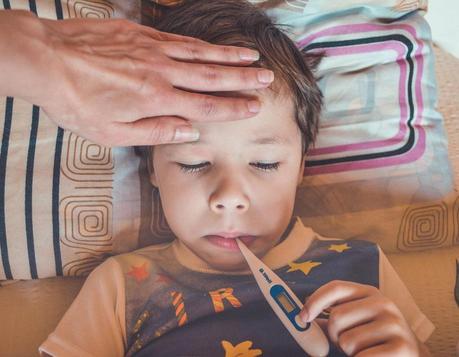Tomato fever, also known as tomato flu, is a condition that results from an infection with the yeast-like fungus Monilia sitophila.
It causes blisters or rashes on the skin, most commonly near the groin and genitals, but it can also be found on the trunk and extremities.
The lesions appear as small, red bumps which eventually turn into deep ulcers that can take up to two weeks to heal completely.
To avoid these uncomfortable sores, it's important to understand what causes tomato fever and how you can treat and prevent them from returning.
What is tomato fever?
Tomato fever is a type of food poisoning that occurs when people eat contaminated tomatoes. The symptoms of tomato fever include nausea, vomiting, diarrhea, abdominal cramps, and fever.
In severe cases, the person may also experience seizures and death. The best way to prevent tomato fever is to practice good hygiene and wash your hands thoroughly after handling raw tomatoes.
It's also important to cook all food thoroughly before eating it. You can take an antibiotic if you think you have been exposed to the bacteria but are not showing any symptoms yet.
How do you get it?
Tomato fever is caused by a bacteria while handling contaminated tomatoes. The bacteria can enter your body through cuts or abrasions in your skin.
Once the bacteria are in your body, they release a toxin that causes fever, chills, and diarrhea. Tomato fever is most commonly seen in people who work with tomatoes or who eat them raw.
The best way to prevent tomato fever is to wash your hands thoroughly after handling tomatoes and to cook them before eating.
Frequent hand washing will also help you avoid getting tomato fever. If you do get it, take ibuprofen or acetaminophen for relief of pain and inflammation as well as antibiotics to help clear up the infection.
What are the symptoms of tomato fever?

The most common symptom of tomato fever is a sudden onset of fever, usually accompanied by chills. Other symptoms may include headache, nausea, vomiting, abdominal pain and diarrhea.
In severe cases, the fever may be high enough to cause convulsions or delirium.
If you experience any of these symptoms after eating tomatoes or coming into contact with them, seek medical attention right now.
How to treat tomato fever?
Tomato fever treatments may include:
- Treatment includes antibiotics.
- Drinking lots of fluids will help the recovery process.
- You should not eat any raw tomatoes until the fever has gone away.
- A person with tomato flu should avoid eating anything that contains raw tomatoes for at least three days after the fever has gone away.
It may take up to six weeks for these symptoms to go away completely. If you think you might have this disease it's important to tell your doctor because they can prescribe medicine which will make it go away faster.
You might want to stay home from work if you're experiencing high fever and other serious symptoms like chest pain or difficulty breathing.
Prevention tips of tomato fever:
- Don't handle tomatoes with bare hands; always wear gloves when working with them.
- Wash your hands thoroughly after handling tomatoes.
- Avoid eating raw tomatoes or anything with raw tomatoes in it.
- Cook tomatoes thoroughly before eating them.
- If you have any cuts or open wounds, avoid contact with tomatoes until they heal.
- Try to drink plenty of fluids.
- If you do develop symptoms, get plenty of rest.
Treatment can be done at home with fluids and rest. However, if the fever continues to worsen despite treatment, see a doctor immediately because it could lead to kidney failure or other serious conditions.
Tomato fever diagnosis:
Tomato fever is a condition caused by eating tomatoes that are not fully ripened. The unripe tomatoes contain high levels of histamine, which can cause an allergic reaction in some people.
Symptoms of tomato fever include hives, itching, swelling of the lips and throat, and difficulty breathing. If you think you have tomato fever, see your doctor for diagnosis and treatment.
There is no specific cure for tomato fever, but symptoms can be treated with antihistamines.
Antihistamines work to neutralize histamine in the body. Symptoms may subside after a few hours or days as long as there is no re-exposure to tomatoes.
Preventative measures include thoroughly washing fruit before consumption and waiting until the fruit has fully ripened before consuming it.
Conclusion
Though tomato fever is a serious illness, it can be easily prevented by following these simple tips mentioned above. If you suspect you or someone you know has tomato fever, seek medical attention immediately. With proper treatment, patients can make a full recovery. But with untreated infections, the bacteria may spread to other parts of the body causing more serious problems. Be safe and healthy this summer!
Related articles:
- Rat bite fever: Causes, symptoms, treatment, and complications
- West Nile virus (WNV): Causes, symptoms, and treatments
- What is Lyme disease? Symptoms, causes, diagnosis, prevention and treatments
- Angelman syndrome: Causes, symptoms and treatments
- Nephrotic Syndrome: Causes, Symptoms, Treatment and Diet Chart

